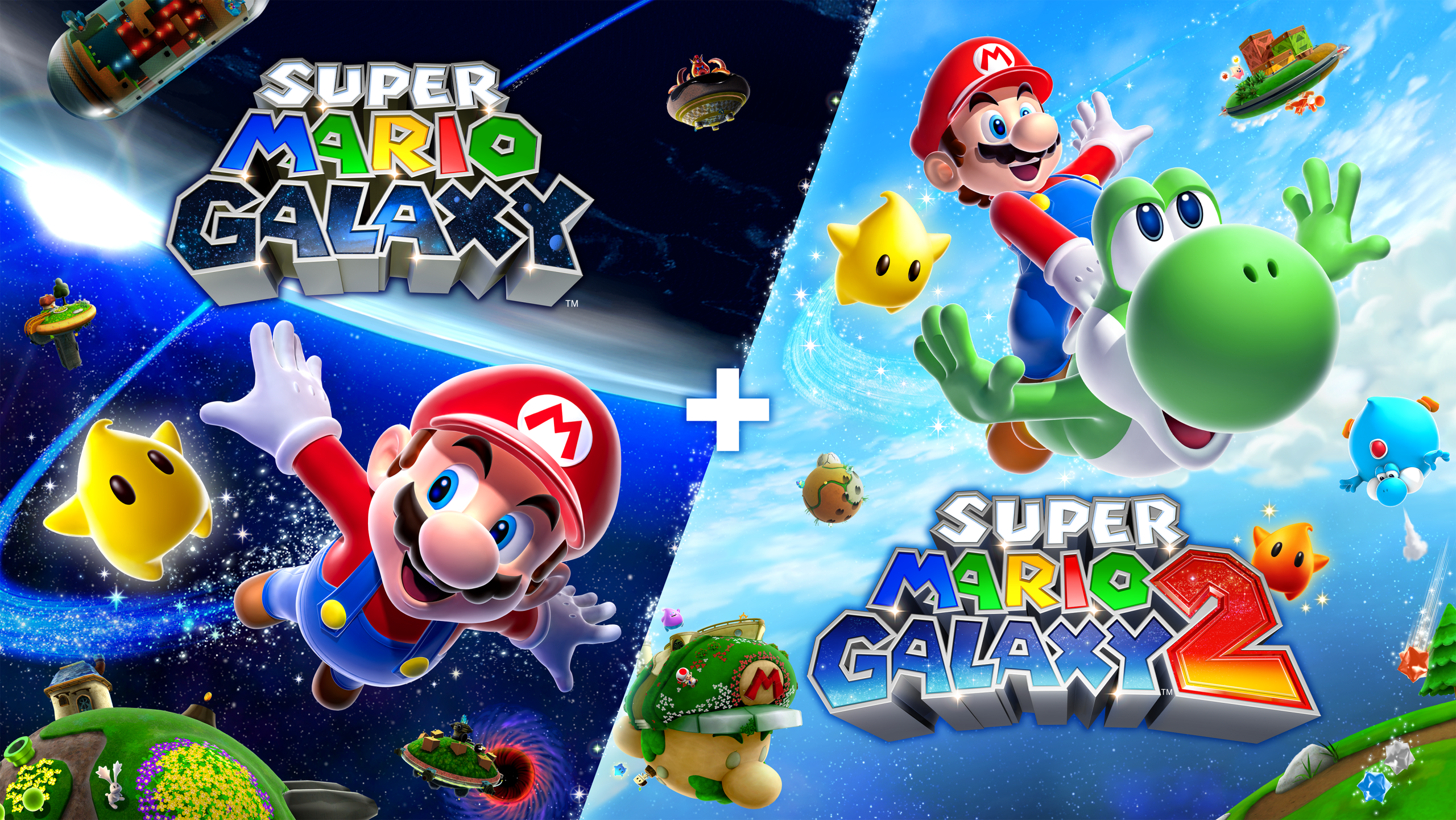As part of the 40th anniversary celebration of the Super Mario Bros. franchise, Nintendo is rereleasing a pair of Wii-era classics later this week on the Switch and Switch 2. Super Mario Galaxy and its sequel, Super Mario Galaxy 2, both arrive with enhanced resolution (1080p on Nintendo Switch, 4K on Switch 2), an improved UI with streamlined menus, and amiibo support—exactly the kinds of modern bells and whistles one would hope to see for these decade-and-a-half-old titles.
Perhaps more notable are the extra storybook chapters and the new Assist Mode. The former adds even more dimension to an already engaging narrative device, while the latter smooths out some of the game’s difficulty with additional health and recovery from falls.
The original Super Mario Galaxy hit North America in late 2007, taking Mario’s 3D platforming adventures into outer space. Using the Wii Remote and Nunchuk, Mario was able to run, wall jump, and somersault, but could also unleash a new spin attack on unsuspecting enemies. More impressively, Mario’s antics could be played out across a number of planetoids, fully modelled spheres with their own discrete gravitational forces, and players could use motion controls to activate special stars that gloriously launched our beloved protagonist across space.
Story-wise, the game fell into the classic “defeat Bowser” trope, though with the addition of a number of cool new characters and settings, including the cosmic guardian Rosalina, the starlike Lumas, and their Comet Observatory hub world.
This enhanced edition does a solid job of updating the visual presentation—though a few textures, particularly water, still look a bit dated—and of translating the limited movement of the old Wii gameplay to that of the much more accurate Joy-Con 2 controllers. You can still shake and swing your way to victory, and the cooperative Co-Star Mode, wherein a second player can fire collected Star Bits at enemies, also survives intact.
Better yet, Handheld mode completely eschews this next-gen Wii-mote waggling in favor of tight dual Joy-Con 2 controls and robust touchscreen support. That said, the Ray surfing minigame does still force you to use gyro controls and, just like in the Super Mario 3D All-Stars release, I plan to die mad about it.
Still, whether you’re returning to this interstellar adventure or taking on the title for the first time, there’s no better way to enjoy Super Mario Galaxy. The game looks, sounds, and feels great overall, and the mission to save the Princess by collecting stolen Power Stars is still both challenging and rewarding.
Though it followed up the original release in the spring of 2010 to similar acclaim, Super Mario Galaxy 2 is, sadly, a game I haven’t played (or even thought much about) in the years since. Maybe that’s why the magic of this peppy little sequel has so fully drawn me in as a Switch 2 release.
While the core gameplay and features are the same as its predecessor, I much prefer the branching map system and even the goofy, Mario-head-shaped Starship Mario hub of Galaxy 2. Moreover, while Mario Galaxy added in some fun power-ups like Bee and Boo Mario, the sequel really blows it out of the water with rolling Rock and skating Ice Mario, platform-building Cloud Mario, and a suite of brand-new abilities for our dino-pal Yoshi (including Dash, Blimp, and Bulb Yoshi).
Also, while both games sport a similarly enhanced resolution, Mario Galaxy 2 straight-up looks better with its evocatively themed planets and awe-inspiring cosmic vistas! I mean, while this isn’t exactly a competition, I am still fully giving the nod to Mario Galaxy 2 as the superior experience. (Yes, even though it also makes me use gyro controls in Handheld mode while playing the Fluzzard gliding mini-game.)
Ok, so if both games are so good, is this distinction even particularly important? Well, that depends. You see, while purchasing the games together in the Super Mario Galaxy + Super Mario Galaxy 2 bundle is the cheapest overall option (priced at $69.99), it’s not your only choice. Super Mario Galaxy and Super Mario Galaxy 2 are available separately on the eShop, each priced at $39.99.
If you, for example, recently played through Galaxy in Super Mario 3D All-Stars and are only really interested in the sequel, this variety of purchase alternatives means you could save a few bucks by just picking up Super Mario Galaxy 2 on its own. (Which, if you’re only getting one, you definitely should.)
Your planet-spanning adventure begins this Thursday, October 2nd, and no matter what title or on which system you play, I’m sure you’ll find the experience to be totally out of this world.
Review materials provided by Nintendo of America. This post contains affiliate links. Long live the Prankster Comet!
Source: geekdad.com
